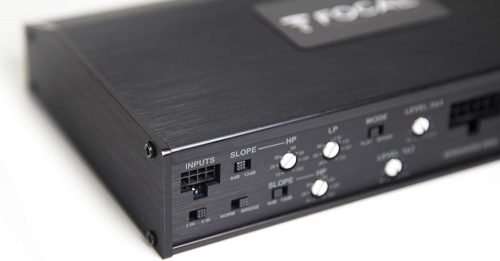
Amazon affiliate here: If you click any Amazon links on my pages and purchase any products I get a small commission from within the original price. Thank you!
Subwoofers and amplifiers are essential components of a car audio system, they help to produce powerful, deep bass sounds. However, to achieve the best performance, it’s important to match subwoofers and amplifiers effectively. This can be a complex and technical process, but with the right information, anyone can do it.
In this article, we’ll provide a step-by-step guide on how to match subwoofers and amplifiers for the best results.
Why Matching Subwoofers and Amplifiers is Important
Matching subwoofers and amplifiers is important for several reasons. The first reason is that an amplifier’s power determines the volume of the subwoofer, so it’s essential to ensure that the amplifier has enough power to drive the subwoofer effectively.
Secondly, if the amplifier and subwoofer are mismatched, it can cause damage to either or both components. Lastly, by matching the subwoofer and amplifier, you’ll achieve optimal performance, which means a cleaner, clearer, and more powerful bass sound. This is assuming you purchased a decent sub and amp.
Step-by-Step Guide on How to Match Subwoofers and Amplifiers
Step 1: Determine the RMS Power of Your Subwoofer
The RMS power of a subwoofer is a measure of the average power it can handle without damage. Let’s just call it continuous power because it’s the power the subwoofer can handle for a long amount of time. To determine the RMS power of your subwoofer, you’ll need to consult the manufacturer’s specifications. If you don’t have access to these specifications, you can usually find them online.
Step 2: Choose an Amplifier with Enough Power
Once you know the RMS power of your subwoofer, you’ll need to choose an amplifier with enough power to drive it effectively. The amplifier’s power should be equal to or greater than the RMS power of the subwoofer. However, it’s important not to choose an amplifier that’s too powerful, as this can cause damage to the subwoofer.
For example: If your subwoofer has an RMS or continuous power rating of 600 watts, My amplifier’s RMS or continuous power should be no more than about 700 watts and no lower than 600 watts. This is our rule of thumb but every audiophile has their own.


Step 3: Determine the Impedance of Your Subwoofer
The impedance of a subwoofer is a measure of the electrical resistance it presents to the amplifier. To determine the impedance of your subwoofer, you’ll need to consult the manufacturer’s specifications. If you don’t have access to these specifications, you can usually find them online.
However, if you have a volt meter or a digital multi-meter handy you could actually just measure the voice coils yourself. Grab a decent multimeter, ((this is my favorite low-cost one)). After you grab your multimeter follow these steps:
1. Locate your subwoofers terminals (negative and positive terminals)
2. Turn your multimeter to the Ohms setting in order to read resistance and put your negative probe onto the negative probe to the subwoofers negative terminal.
3. Touch the positive probe to the positive terminal on your subwoofer.
4. Your reading will show the resistance of that voice coil.
Step 4: Choose an Amplifier with the Correct Impedance
Once you know the impedance of your subwoofer, you’ll need to choose an amplifier with the correct impedance. Most subwoofers are either 2 or 4 ohm, and you’ll need to choose an amplifier that’s compatible with the impedance of your subwoofer.
If you’re using multiple subwoofers, you’ll need to consider the total impedance of the subwoofers when choosing an amplifier.
Step 5: Consider the Sensitivity Rating of Your Subwoofer
The sensitivity rating of a subwoofer is a measure of how effectively it converts power into sound. To determine the sensitivity rating of your subwoofer, you’ll need to consult the manufacturer’s specifications. If you don’t have access to these specifications, you can usually find them online.


Step 6: Adjust the Amplifier’s Settings
Once you’ve chosen an amplifier that’s compatible with your subwoofer, you’ll need to adjust its settings to get the best performance.
Most amplifiers have adjustable gain, crossover, and equalization controls, and you’ll need to experiment with these settings to get the best results. It’s important to start with the gain control, as this will affect the overall volume of the subwoofer.
Step 7: Test the System
Once you’ve adjusted the amplifier’s settings, you should test the system to ensure that it’s working effectively. You can do this by playing music that has deep bass sounds and adjusting the settings as necessary. It’s important to listen carefully to the sound and make any necessary adjustments until you’re satisfied with the results.
Need Help Installing any Audio Equipment?
How To Install A Car Amplifier
Looking For a New Audio System Build?
Answers To Some Common Questions
How to Choose the Right Power and Ground Wire
Matching Subwoofers and Amplifiers
Get More Bass Out Of My Subwoofer
Why Does My Stereo Cut Out at High Volume?
Conclusion
Matching subwoofers and amplifiers can be a complex and technical process, but with the right information and a little bit of experimentation, anyone can do it. By following the steps outlined in this article, you’ll be well on your way to achieving optimal performance and a powerful, deep bass sound. Remember, it’s important to choose an amplifier that’s compatible with your subwoofer and to experiment with the settings until you’re satisfied with the results. Happy listening!

